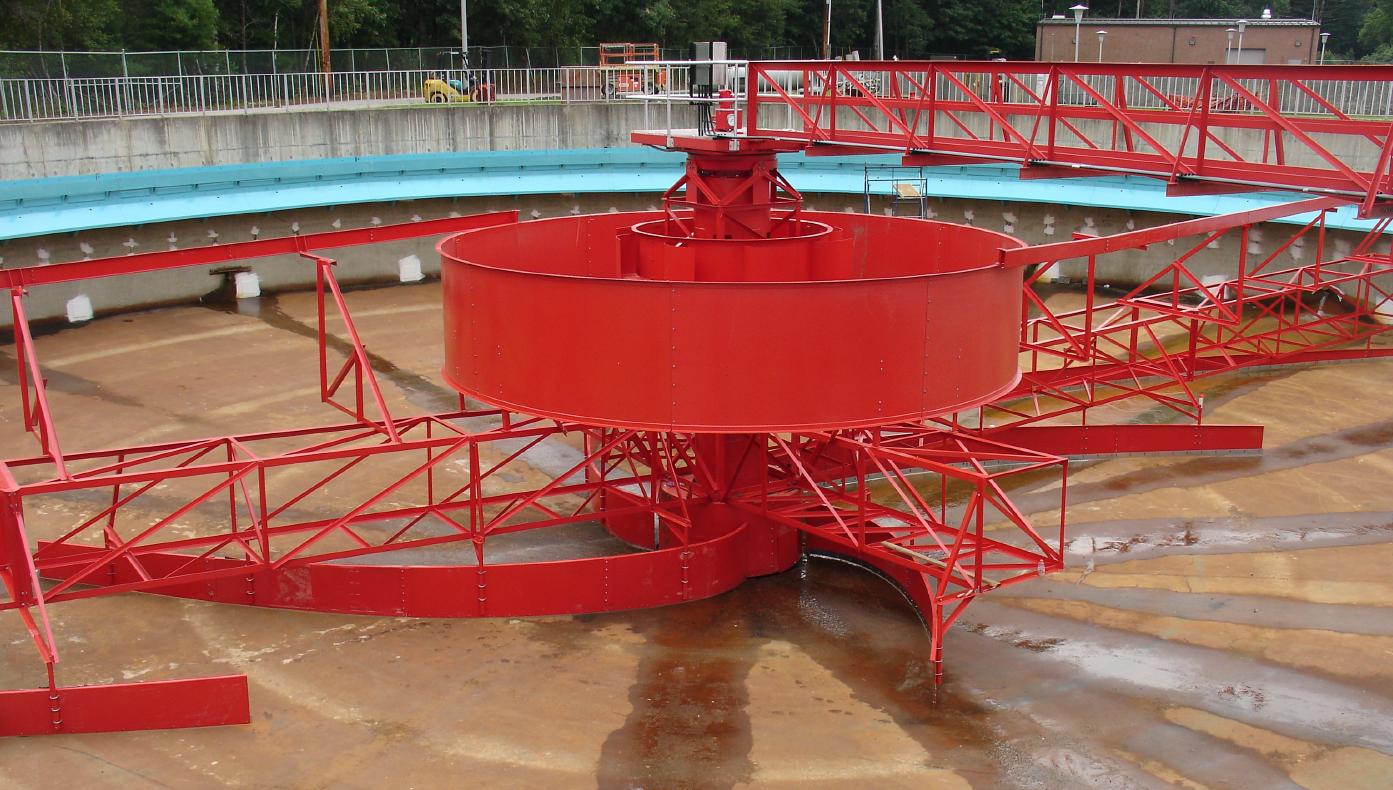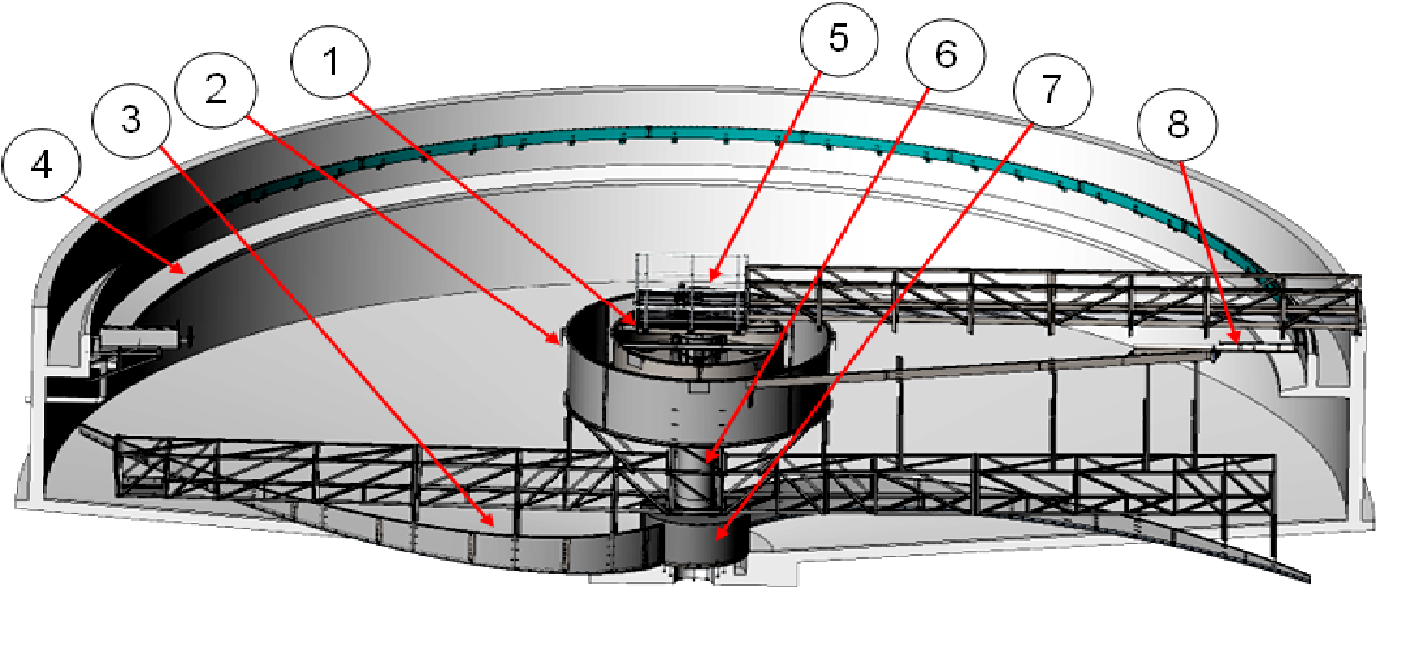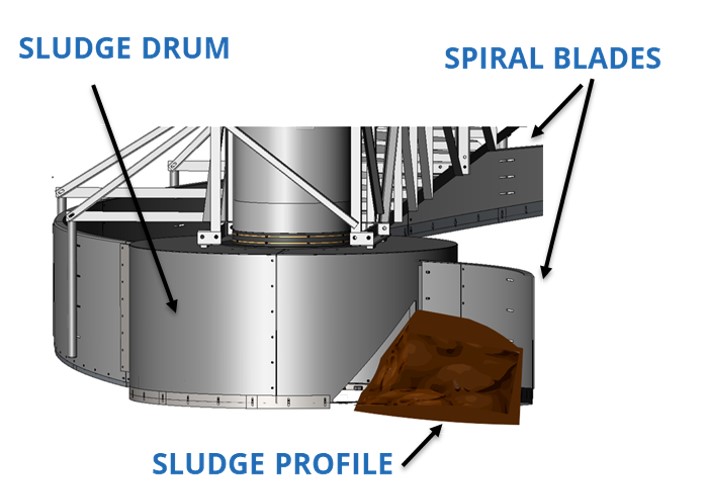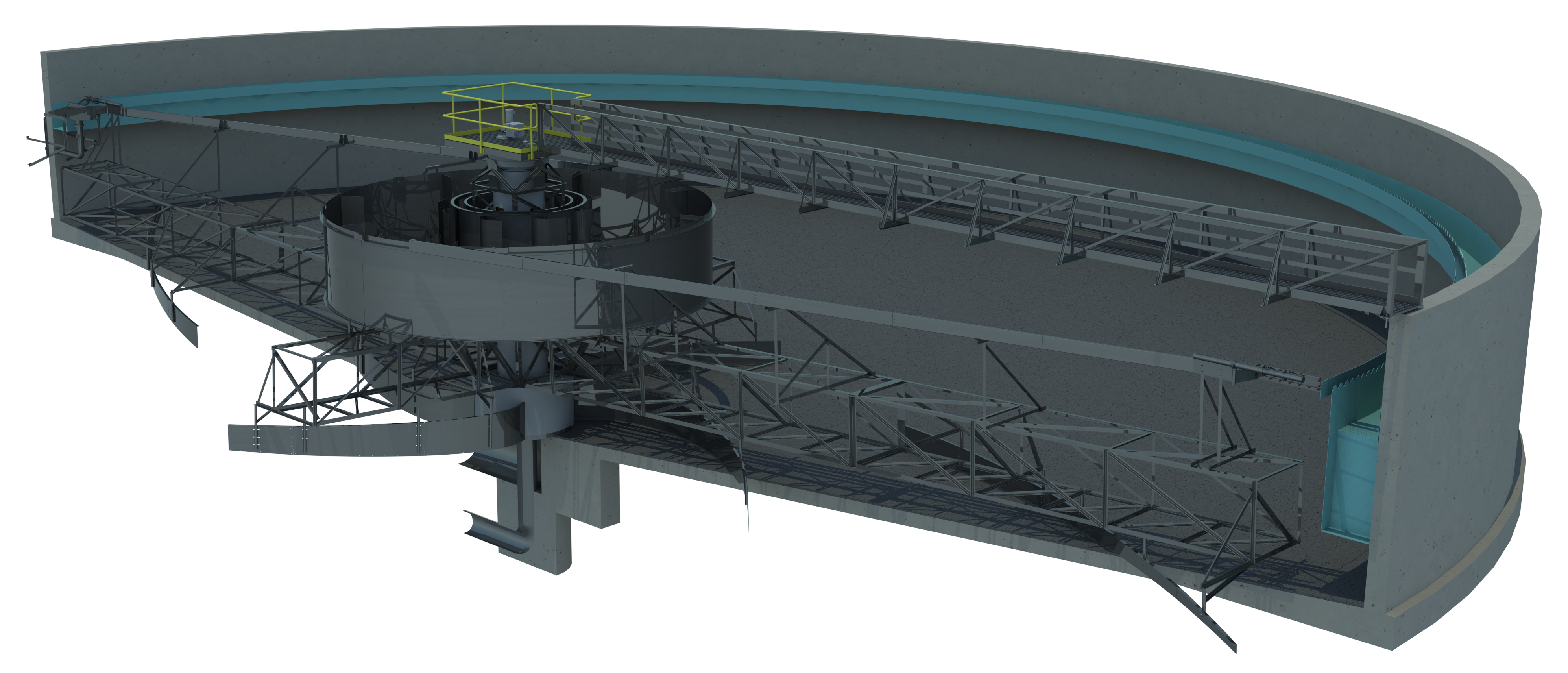
About Spiral Blade Clarifiers
Just like its namesake, the spiral blades of the ClearStream Nautilus™ Spiral Blade Clarifiers are designed for function and strength and the precise sludge transportation rate required by the application and the clarifier sizing.
Because of the high rate of sludge removal with spiral blades, there is practically no less risk of denitrification or secondary phosphorus release due to sludge age. In addition, if the Rakes are run at the proper speed, there is little or no plume formation which could impact the effluent solids level.
Spiral blades have the added advantage of not requiring seals or having the risk of plugged suction pipes. Suction sludge removal techniques demand more maintenance than spiral rake blades. Debris or particles accumulating in the horizontal runs of suction pipes can readily clog them.
The spiral scraper blade has a constant attack angle of 30 to 35 degrees and generally increases in depth towards the center of the clarifier.
Settled sludge is rapidly collected continuously along the spiral rake blade pushing it towards the center with one or two passes of the rake arm.
On larger units (>100’ diameter), multiple spiral blade rakes may be used. Depending on sludge volume to be removed, 2 Half Radius arms may be added also to keep the sludge hopper full (minimizing “rat holing”).

Standard Options
1.Dispersion Well™ (IDW) The unique IDW design has demonstrated, in side-by-side testing, substantial improvements in lowered TSS over other EDI designs.
2.Feedwell: Allows the solids a low energy area in which they may form larger flocs.
3.Blades: Segmented Blades, Half Radius Additional Blades are options
4.Current Baffle: The primary function is to eliminate wall currents and prevents clarifier short circuiting.
5.Precision Bearing Drives: A proven design which does not require a lower bearing; maximizes drive life and minimizes drive maintenance
6.Column Inlet: This feed configuration maximizes the effectiveness of the IDW.
7.Sludge Drum™ The Sludge Drum rotates with the blades and therefore is always exposed to the highest concentration of sludge.
8.Skimmers: Standard Skimmers, Full Radis
Skimmers, and Ducking Skimmers are all available.
Sludge Drum™ Option
The Sludge Drum™ rotates with the blades and therefore it is always exposed to the highest concentration of sludge. In addition, the opening matches sludge profile, further reducing the amount short circuiting.
Using this design, ClearStream can convert a Suction Pipe Header to a Spial Blade Rake without compromising the concrete floor of the unit.

3D Models of Every Project
ClearStream produces a 3D model of every unit which we manufacture. These models are extremely valuable to ensure proper fit up. In addition, these models can be a useful tool for operators training and understanding of the unit design and operation. ClearStream provides these 3D models as well as the means for clients to view and manipulate these models at their own site or offices. This affords operations and maintenance personnel with a unique opportunity to “inspect” the unit prior to any planned maintenance without having to drain the tank.

Advantages:
- Nothing to “plug up” under water.
- Regardless of solids loading settled sludge will be transported to the settled sludge pit, and/or rotating sludge manifold.
- The settled sludge transport time is significantly decreased over the segmented blade design. Many consider the spiral blade clarifier to be a rapid solids removal clarifier.
Disadvantages:
- Increased capital costs.
- Increased installation costs.
- Larger clarifiers (>120’) will require multiple spiral blades.
Variations:
- Change the attack angle of the blade to the radius.
- Add two half radius arms to aid in solids transport near the clarifier center.
- Dual slope bottom (steeper near the center) to decrease the solids inventory
in the bottom of the clarifier.
Have A Process Problem? Need A Solution?
Our engineers will ensure you get the support needed to solve your process problems.
